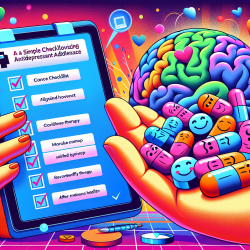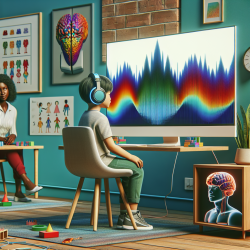Enhancing Therapy Outcomes with Internet-Based Support
As a passionate advocate for data-driven decisions in speech-language pathology, I am thrilled to share insights from a fascinating study on enhancing cognitive-behavioral therapy (CBT) for hoarding disorder with internet-based clinician support. This study, conducted by Ivanov et al., provides compelling evidence on how integrating technology can significantly improve therapy outcomes.
The Study in Focus
The research titled Enhancing group cognitive-behavioral therapy for hoarding disorder with between-session Internet-based clinician support: A feasibility study explores a novel approach to therapy. The study involved 20 participants with hoarding disorder (HD) who underwent group CBT combined with an internet-support system, allowing communication between sessions.
Key Findings
The results were promising, showing a significant reduction in hoarding symptoms as measured by the Saving Inventory—Revised (SI-R). The treatment yielded a large effect size (Cohen's d = 1.57) at post-treatment, with gains maintained at a 3-month follow-up. Notably, the study reported high group attendance and zero dropouts, highlighting the effectiveness of internet-based support in maintaining engagement.
Implications for Practitioners
For practitioners, this study underscores the potential of integrating internet-based support into traditional therapy models. Here are some practical takeaways:
- Increased Engagement: Internet-based support can enhance motivation and engagement, reducing dropout rates and improving therapy adherence.
- Cost-Effectiveness: Combining group CBT with online support can be more cost-effective than traditional methods, offering flexibility and accessibility.
- Personalized Feedback: The ability to provide personalized feedback and motivational support between sessions can lead to better outcomes.
Encouraging Further Research
While the study presents promising results, it also opens avenues for further research. Future studies could explore:
- The optimal blend of face-to-face and internet-based support for various disorders.
- Long-term effects of internet-based support post-therapy.
- Adaptations of internet-based support for other therapeutic contexts.
Conclusion
This study highlights the transformative potential of integrating internet-based support into therapy. As practitioners, embracing such innovations can enhance therapy outcomes and provide more accessible, effective care for clients.
To read the original research paper, please follow this link: Enhancing group cognitive-behavioral therapy for hoarding disorder with between-session Internet-based clinician support: A feasibility study.










